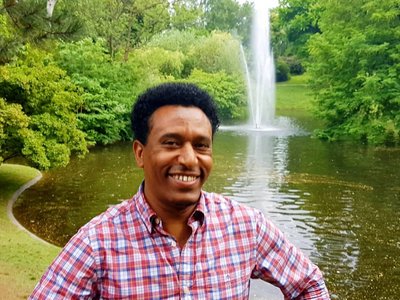

Agroforestry (AF) is a land use management system in which trees or shrubs are grown around or among crops or pastureland. Sustainable forms of AF can contribute to reduce atmospheric carbon and mitigate climate change. The role of AF systems in providing ecosystem services is very crucial. The greatest considerable increase in carbon (C) storage is often attained by moving from lower biomass land-use systems to tree-based systems such as AF. Since they include trees, they have a higher biomass than other grass-based systems and therefore have a higher capacity to store atmospheric carbon dioxide. Therefore, it is crucial to better understand the role of agroforestry systems in sequestrating carbon in both above and below ground biomass and soil.
My study was aimed at investigating the carbon pools of three indigenous agroforestry systems in the southeastern Rift-Valley Landscapes, Ethiopia. The research showed that the investigated indigenous agroforestry systems have considerably higher carbon stocks than those reported for some tropical forests and AF systems. Relatively higher C stock in the studied AF systems is an indicator of their potential to serve as large sinks for C. As a result, these land-use systems might have a great role in sequestering significant amounts of C and thus contributing to mitigate climate change. Quantifying the C stock and understanding the potential of the studied AF systems to store C may help to design and develop climate change mitigation strategies. It further contributes to developing a national policy concerning the mitigation of climate change and the implementation of international mechanisms such as REDD+ (Reducing Emission from Deforestation and Forest Degradation) and CDM (CleanDevelopment Mechanism).
Hafte Mebrahten Tesfay received his MSc degree in Agroforestry from Hawassa University, Ethiopia. From 2006-2010 he served as an expert of soil conservation and head of land administration and environmental protection in one of the Ethiopian districts. He also worked as a lecturer and researcher at Dilla University and later at Hawassa University, Ethiopia. In 2016 he was awarded an APPEAR scholarship and received his PhD from University of Natural Resources and Life Sciences (BOKU), Vienna in 2020. Currently he works as a researcher at the Federal Research and Training Centre for Forests, Natural Hazards and Landscape, Department of Forest Biodiversity and Nature Conservation, Vienna.
Publication:
Tesfay, H.M.; Negash, M.; Godbold, D.L.; Hager, H. Assessing Carbon Pools of Three Indigenous Agroforestry Systems in the Southeastern Rift-Valley Landscapes, Ethiopia. Sustainability 2022, 14, 4716. https://doi.org/10.3390/su14084716
